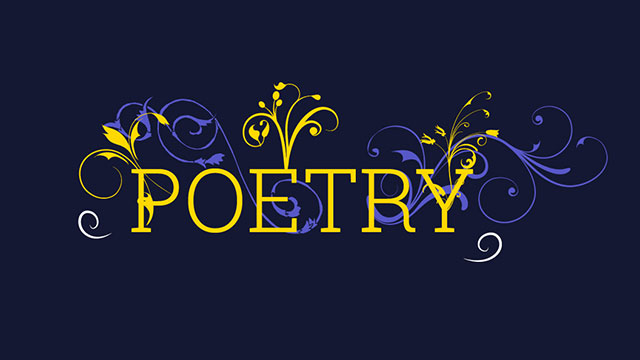Table of Contents
POETRY AND MATH
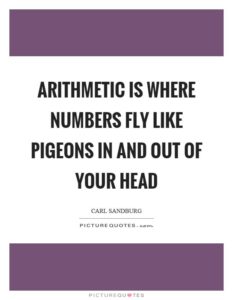 |
Every frustrated math student’s favorite poem is Carl Sandburg’s Arithmetic, which begins “Arithmetic is where numbers fly like pigeons in and our of your head.” |
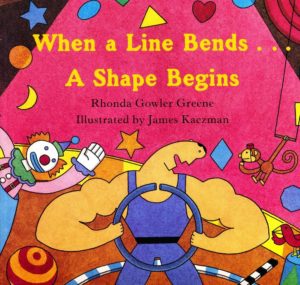
|
Rhonda Gowler Greene’s picture book When a Line Bends…A Shape Begins (Sandpiper, 2001) is an upbeat rhyming introduction to shapes – circle, square, triangle, diamond, rectangle, octagon, oval, star, heart, and crescent – for ages 3-7. |
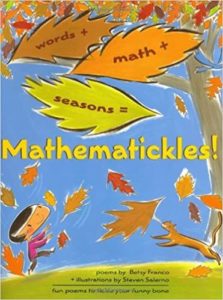
|
Betsy Franco’s Mathematickles (Margaret K. McElderry, 2006) follows a little girl and her cat through the seasons, demonstrating how words and math equations combine to make poetic puzzles. Summer, for example, features “feet – shoes + grass = barefoot” and “rock x waves = sand.” (I love these.) For ages 5 and up. |
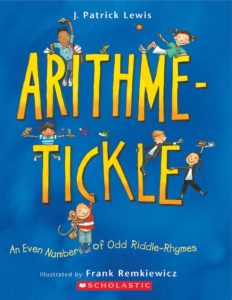
|
By J. Patrick Lewis, Arithme-Tickle (Sandpiper, 2007) is a collection of fun rhyming-riddle mathematical puzzles with titles like “How to Weigh Your Poodle” and “Sailing a Bathtub.” “A Regular Riddle,” for example, begins: “What’s the number of points on a regular star/Less the number of wheels on a regular car/Plus the number of teeth in a regular mouth/Less the number of states that begin with South…” For ages 6-9. |
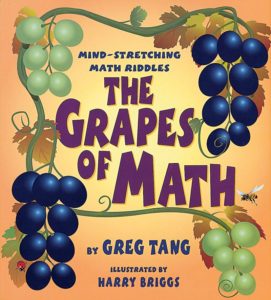
|
Greg Tang’s catchy The Grapes of Math (Scholastic, 2004) is an illustrated collection of rhyming math riddles that encourage kids to use pattern-recognition and grouping skills to solve problems. (There are faster ways of counting the number of grapes on a vine than one by one.) For ages 7-10. |
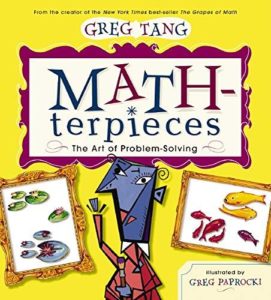
|
There are several more by Tang in the same (rhyming) format, among them Math for all Seasons (Scholastic, 2005), Math Potatoes (Scholastic, 2005), Math Fables (Scholastic, 2004), Math Appeal (Scholastic, 2003), and Math-terpieces (Scholastic, 2003). |
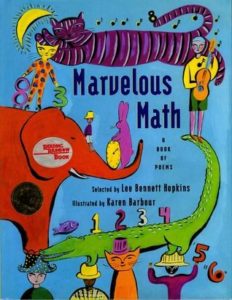
|
Compiled by Lee Bennett Hopkins, Marvelous Math (Simon & Schuster, 2001) is a collection of math-promoting poems by a variety of poets. Mary O’Neill’s “Take a Number,” for example, points out that “Wouldn’t it be awful” to live in a world without mathematics; Lillian Fisher’s “To Build a House” asks if “Without numbers and measure/Would our house ever rise/Against the hill/Beneath blue skies?” Poems with an agenda for ages 7-11. |
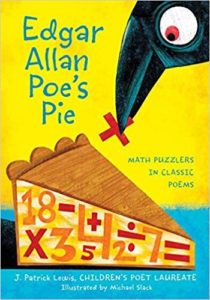
|
J. Patrick Lewis’s Edgar Allan Poe’s Pie (Harcourt Children’s Books, 2012) is a collection of math puzzles presented through parodies of classic poems by such poets as Edgar Allan Poe, Walt Whitman, Emily Dickinson, Robert Frost, A.A. Milne, Langston Hughes, and Ogden Nash. “Elephant with Hot Dog,” for example, was inspired by Edward Lear’s “There Was an Old Man with a Beard:” “When an elephant sat down to order/A half of a third of a quarter/Of an eighty-foot bun/And a frankfurter, son/Was it longer than three feet, or shorter?” For ages 7-11. |
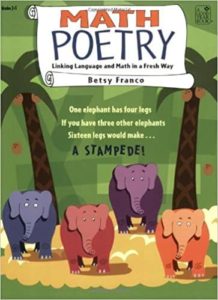
|
Betsy Franco’s Math Poetry (Good Year Books, 2006) is a clever instruction manual on writing many different kinds of math poetry with kids, variously covering number sense, estimation, measurement, basic arithmetic operations, geometry, algebra, and graphing. Each chapter includes sample student poems, poetry templates, and teaching suggestions. The entire second half of the book is devoted to the teaching of “mathematickles” – an innovative and irresistible mix of word play and mathematical equation that functions like a poem crossed with a parlor game. An interesting resource for ages 7-11. |
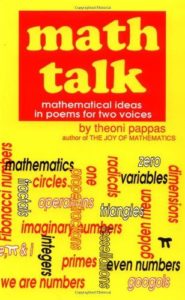
|
Theoni Pappas’s Math Talk (World Wide Publishing/Tetra, 1993) is a collection of math-themed poems for two voices on such topics as circles, fractals, Fibonacci numbers, Mobius strips, triangles, prime numbers, tessellations, and infinity. It’s a nice mix of mathematical food for thought and expanded possibilities for poetry. For ages 8 and up. |
GAMES, PROJECTS, AND POETRY AT THE MOVIES
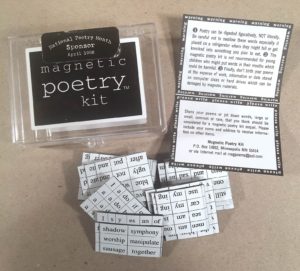 |
Magnetic Poetry sells themed poetry kits, each consisting of a collection of words to be assembled into poems and stuck onto the nearest refrigerator, filing cabinet, locker door, or any other convenient metal surface. There are many different themed kits including kids’ kits for beginners; collections for book lovers, bike lovers, music lovers, and cowboys; foreign-language collections; Math, Pirate, and Shakespeare kits; and much more. Also available: poetry collections in the form of self-adhesive chipboard words or travel stickers. |
| Create your own online poems with virtual magnetic poetry. | |
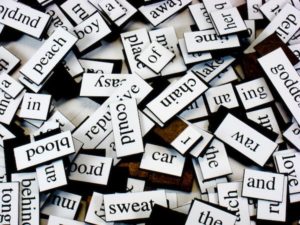 |
The Instructables has illustrated instructions for making your own magnetic poetry tiles. |
 |
Or try making your own Magnetic Pixel Poetry. |
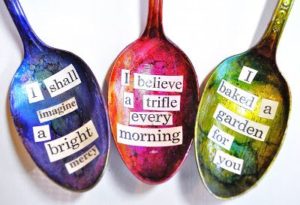 |
Spoon Poetry Tutorial has video instructions for writing tiny poems on colorful spoons. |
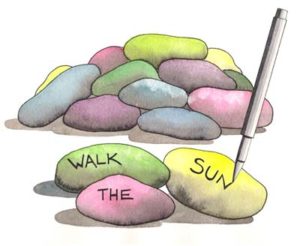 |
Make Poetry Pebbles. You’ll need a lot of pebbles, paint, and magic markers. |
| Wizards and Pigs is an interactive online game of rhyme, rhythm, and alliteration, featuring not only cartoon wizards and pigs, but elves, goblins, and dragons. | |
| From the Academy of American Poets, Watch a Poetry Movie has annotated lists of films about poets and/or films featuring poetry. | |
| From the Internet Movie Database, an annotated list of the Seven Most Compelling Movies About Poets and Poetry includes Shakespeare in Love and The History Boys. | |
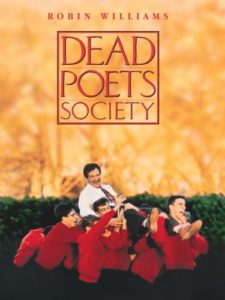 |
Surprisingly not on the list is Dead Poets Society (1989), in which Robin Williams plays an English professor at a boys’ school who both promotes a love of poetry and defiance of the status quo. It’s rated PG, but has intense and tragic aspects. Not for the very young. |
